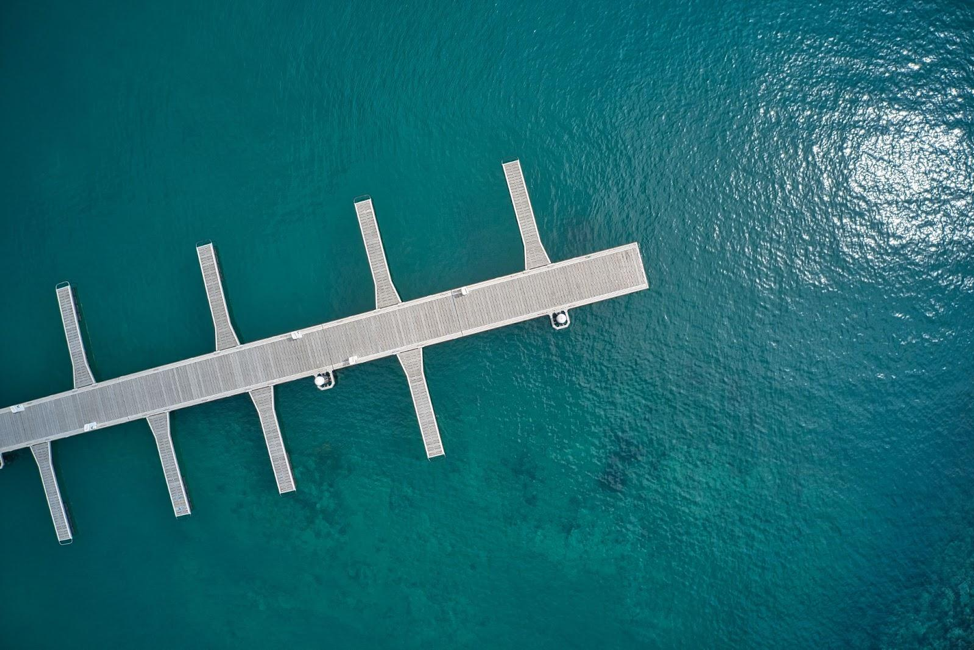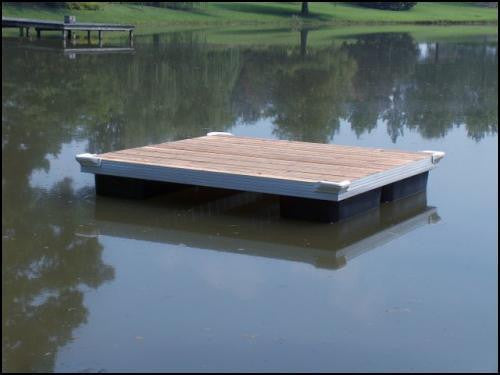Develop the Perfect Docking Solution With Floating Docks
Floating docks existing a flexible service for a variety of maritime demands, adjusting effortlessly to varying water levels and varied vessel types. As we explore the important components that contribute to the effectiveness of floating docks, numerous key factors concerning stability and maintenance will certainly arise, elevating concerns about just how to enhance your docking experience.

Advantages of Floating Docks
Floating docks offer various advantages that make them an excellent choice for various maritime applications. One of the primary benefits is their versatility to altering water levels. Unlike repaired docks, floating docks fluctuate with the trend, ensuring consistent accessibility for vessels. This feature is particularly essential in areas susceptible to considerable tidal changes or seasonal water level changes.
Additionally, floating docks are generally easier and quicker to install contrasted to standard fixed frameworks. Their modular style enables straightforward setting up and disassembly, helping with maintenance and moving when required. This flexibility is specifically helpful for short-term applications or in environments where conditions might alter.
Floating docks likewise have a tendency to be much more eco-friendly, as they minimize disruption to the seabed and surrounding marine environments. Their resilient nature minimizes the danger of damages to marine life, promoting a much healthier environment. These docks can be tailored to suit various vessel sizes, ensuring that they satisfy particular functional requirements.
Eventually, the mix of versatility, ease of installation, and environmental considerations makes floating docks a highly effective option for a broad array of maritime demands.
Picking the Right Products
Picking the ideal materials for floating docks is essential to make certain stability, durability, and longevity. The option of products straight affects the dock's efficiency in different environmental problems, including direct exposure to water, sunlight, and possible wear from aquatic web traffic.
Common materials made use of for floating docks include aluminum, wood, and high-density polyethylene (HDPE) Aluminum is light-weight, corrosion-resistant, and needs marginal upkeep, making it an excellent selection for durability. Nonetheless, its initial price can be greater contrasted to various other products.
Timber, while visually enticing and providing a conventional look, can be prone to rot and bug damage otherwise appropriately treated. Utilizing pressure-treated wood or normally long lasting types like cedar or redwood can minimize these issues.
HDPE is a popular option as a result of its resistance to UV rays and chemicals, along with being environmentally pleasant. dock company. It is offered and light-weight in different shades, permitting customization
Eventually, the right material option will depend on details demands, consisting of budget, desired looks, and ecological considerations. Mindful evaluation of these elements will lead to a effective and durable floating dock solution.
Layout Factors To Consider for Stability
When developing floating docks, making certain stability is a basic element that can significantly impact their capability and safety and security. Stability in floating dock style is affected by different aspects, including buoyancy, weight distribution, and the arrangement of components. An optimum buoyancy system ought to make use of materials that offer sufficient lift while minimizing weight. This equilibrium makes certain that the dock stays above water, also look these up under varying lots.
Weight circulation is crucial; equally dispersing lots across the dock stops tilting and boosts stability. This can be accomplished with critical placement of docking devices, such as fenders and cleats, as well as correct spacing of drifts. Furthermore, the dimensions of the dock must be thoughtfully prepared. Broader styles can supply boosted stability, particularly in rough water conditions, while longer docks might need extra assistances to prevent drooping.
One more essential consideration is the environmental effect, including wave activity and wind. Integrating features such as sidewalls or skirting can assist mitigate the effects of environmental forces, preserving stability in damaging problems. Eventually, a mix of thoughtful layout, product selection, and understanding of ecological factors will certainly produce a floating dock that meets both security and safety requirements.
Installment Tips and Methods

Next, protect the necessary permits and abide by regional policies, which might determine installment approaches and ecological factors to consider. If required, engage a qualified specialist experienced click in floating dock setups. Use high-grade materials created for aquatic settings to enhance toughness and long life.
When placing the dock, align it alongside the shoreline to promote simple access. Guarantee that the anchoring system is durable, employing cinder block or helical supports to stabilize the dock against wind and wave activity. It's crucial to account for seasonal water level fluctuations, consisting of prospective ice activity in cooler climates.
During the installment, verify the dock's floatation and security prior to wrapping up the anchoring. Routinely inspect the installation for any indicators of wear or damages. By following these ideas and techniques, you can attain a protected, practical, and aesthetically pleasing floating dock installment that satisfies your demands.
Upkeep and Treatment Guidelines
Caring and maintaining for floating docks is crucial to lengthening their lifespan and making sure secure use. Normal evaluations need to be carried out to determine any type of indicators of wear, damages, or aquatic growth. Seek fractures, loose installations, or discolored areas on the dock's this content surface, as these concerns can endanger architectural honesty.
Cleansing is crucial. Utilize a pressure washing machine to remove algae, barnacles, and debris, which can build up gradually. For persistent growth, consider eco-friendly cleaning agents that will not damage water life.
In addition, check the mooring lines and anchors often to ensure they are complimentary and protected from corrosion. Replace any frayed or harmed lines without delay to preserve security.
Throughout severe climate, such as storms or freezing problems, take preventive steps. Safeguard the dock with extra mooring lines and, if possible, remove any detachable components to prevent damage.
Final Thought
In verdict, the application of floating docks presents a functional and effective docking solution appropriate for numerous maritime applications. With proper installment and regular maintenance, floating docks can provide reliable and reliable docking experiences for a broad array of vessels.
As we check out the essential aspects that contribute to the efficiency of floating docks, numerous essential elements regarding security and upkeep will arise, increasing inquiries about exactly how to enhance your docking experience. Unlike taken care of docks, floating docks increase and fall with the trend, guaranteeing regular availability for vessels.When designing floating docks, ensuring security is an essential facet that can considerably affect their functionality and safety. Stability in floating dock layout is affected by different aspects, including buoyancy, weight distribution, and the plan of parts. Eventually, a mix of thoughtful layout, product selection, and understanding of environmental aspects will generate a drifting dock that meets both stability and safety demands.